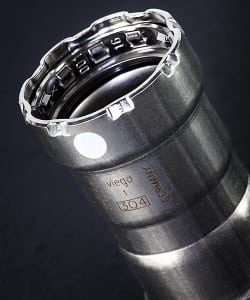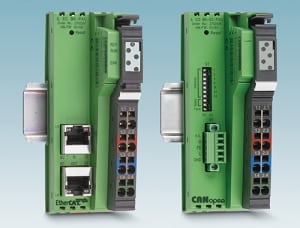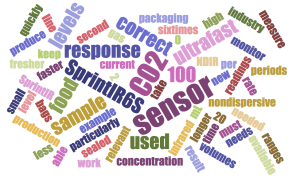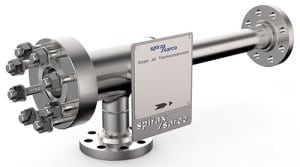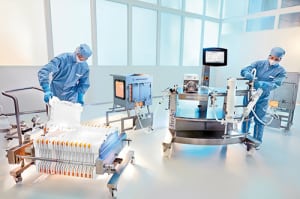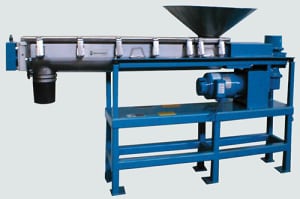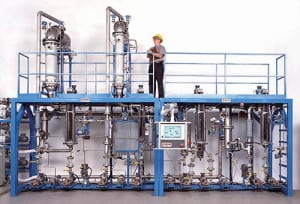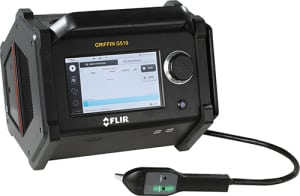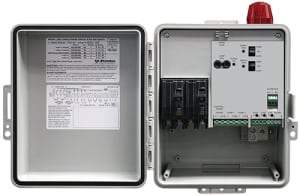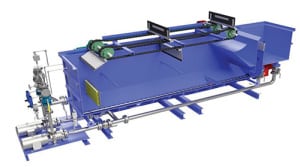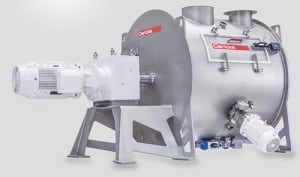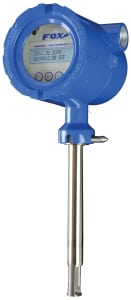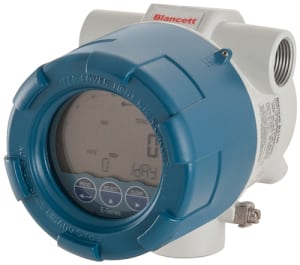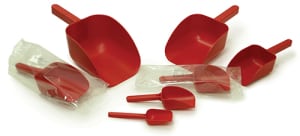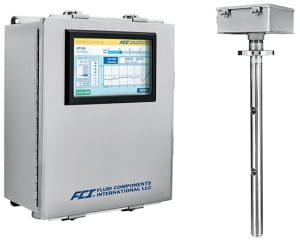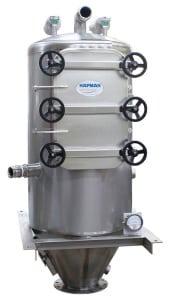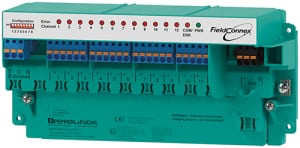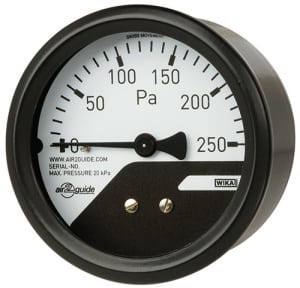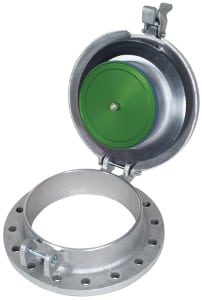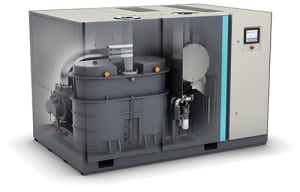New Products & Services
August 2017
New MegaPress stainless-steel press fittings (photo) can reduce the time required to make pipe repairs compared to other pipe joining systems, reducing downtime and the potential for losses in revenue. According to the manufacturer, MegaPress fittings enable secure connections in 7 s or less, reducing installation time by up to 60% compared to welding or threading. Designed for Iron Pipe Size (IPS) stainless steel, the fittings are equipped with the patented Smart Connect feature, which allows installers and maintenance personnel to easily identify unpressed connections during pressure testing. — Viega LLC, Broomfield, Colo.
The modular Inline I/O system product range has now been extended with two new bus couplers: the IL EC BK-PAC bus coupler connects the Inline I/O system to an EtherCAT controller (photo). The bus coupler, which is designed as an EtherCAT slave, supports the CoE and FSoE mailbox protocols. The entire I/O station is mapped as a modular EtherCAT device using the Modular Device Profile (MDP) via the bus coupler. A corresponding ESI file is available for integrating the Inline station into the programming system. The IL CO BK-XC-PAC bus coupler for CANopen is designed for use in adverse ambient conditions. For distributed safety solutions, both bus couplers can be combined with safety-related terminal blocks featuring SafetyBridge Technology. — Phoenix Contact GmbH & Co. KG, Blomberg, Germany
The new, ultra-fast SprintIR6S nondispersive infrared (NDIR) sensor for CO2 can take up to 20 readings per second, with a six-times faster response rate than the current SprintIR sensor. The ultra-fast response is particularly relevant to monitor that the correct levels of CO2 are being used. For example, in the food packaging industry, high levels of CO2 are used to keep food fresher for longer periods of time. On the production line, a sensor is needed to measure that the bags are being sealed with the correct level of CO2, which can be up to 100% concentration. The sensor must be able to work on small sample volumes and produce a result very quickly. The SprintIR6S needs less than 2 mL of sample gas. The sensor is available in measurement ranges from 0 to 100%. — Gas Sensing Solutions Ltd., Cumbernauld, Scotland
This company’s Steam Jet Thermocompressors (photo) compress low-pressure steam (often waste steam) in order to make this steam available for additional applications. The thermocompressor unit is simple in construction and consists of three fundamental components — a motive steam nozzle, suction body and a diffuser. This compact and lightweight design make it easy to install into a pipeline and enables overhead installations. A wide range of materials of construction are available to suit process requirements, including stainless steel, carbon steel, titanium, chrome and molybdenum. Steam Jet Thermocompressors have no moving or rotating parts. Minimal maintenance is required, making the units suitable for installation in remote or inaccessible locations. — Spirax Sarco Inc., Blythewood, S.C.
This company has launched three new second-generation TurboVap evaporation systems (LV, II and EH) to build upon the foundations of the TurboVap product line. The new TurboVap systems incorporate many new user-driven features. Each system has enhanced visibility, a compact design, removable and adjustable nozzles, exchangeable manifolds, evaporation flow gradients and a touchscreen interface. The TurboVap EH system is seamlessly integrated with the company’s Extrahera product and is aesthetically very similar, with similar internal lighting, glass sides and a glass lid, greatly improving sample visibility. In parallel, the company is introducing a series of Multi-Racks that offer greater flexibility in the variety of different tube and vial sizes that can be processed. Each system has the highly efficient, patented gas-vortex-shearing technology. — Biotage AB, Uppsala, Sweden
This company has expanded its range of single-use membrane chromatography solutions with Sartobind Cassettes (photo), which are suitable for the capture of large proteins. This pod-like modular system has been developed for commercial applications in both capture and polishing. New Sartobind cassettes offer the same flow path, bed heights (4 and 8 mm) and void volume ratios as Sartobind capsules, and are compatible with Q, S, STIC PA and phenyl ligands. The new design goes beyond the previous 5-L size limitation for capsule formats, expanding the boundaries of membrane chromatography. Multiple cassettes, each with 0.8- or 1.6-L membrane volume, can be set up in three different stainless-steel holders, resulting in maximum membrane volumes of 20, 50 or 100 L, respectively. — Sartorius Stedim Biotech, Göttingen, Germany
The Vibra Blender (photo) utilizes a combination of a rotating paddle and material fluidization to continuously blend dry solids. Gentle controlled vibration of the mixing trough fluidizes ingredients on entry where a cut-and-fold mixing rotor provides agitation. Materials flow through the Vibra Blender by gravity, making it completely self-regulating to changes of feedrate. The blender’s rugged design offers dust-tight operation, easy cleanout and low-maintenance operation. Vibra Blenders are available in capacities up to 1,500 ft 3 /h. — Vibra Screw, Totowa, N.J.
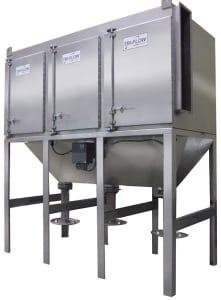 This company’s Tri-Flow Compact filter technology (photo) is an alternative to HEPA filters for submicron particulate matter and fumes. Tri-Flow offers filtration efficiencies of 99.9999% for particles larger than 0.5 μm with two to three times more filtration area than traditional filter bags, says the manufacturer. Tri-Flow filters are self-supporting; media is pleated and continuously bonded for maximum stability. Aerodynamic gasketing optimizes pulse-cleaning efficiency and self-cleaning filter elements are easy to maintain with integral pulse-jet cleaning. — Tri-Mer Corp., Owosso, Mich.
This company’s Tri-Flow Compact filter technology (photo) is an alternative to HEPA filters for submicron particulate matter and fumes. Tri-Flow offers filtration efficiencies of 99.9999% for particles larger than 0.5 μm with two to three times more filtration area than traditional filter bags, says the manufacturer. Tri-Flow filters are self-supporting; media is pleated and continuously bonded for maximum stability. Aerodynamic gasketing optimizes pulse-cleaning efficiency and self-cleaning filter elements are easy to maintain with integral pulse-jet cleaning. — Tri-Mer Corp., Owosso, Mich.
This company’s Hybrid Still technology (photo) is designed to separate extremely heat-sensitive fine chemicals and other substances. These systems combine the gentle evaporating principle of dynamically mixed and transported wiped thin films with the highly efficient multiple-plate separation capability of fractional columns. Benefits of the technology include short residence time, high vacuum and multiple-plate operation, which provide high purity and yield, with low degradation. Typical applications include purification of edible and essential oils, esters, pharmaceuticals, foods, flavors, fragrances, polymers, extracts, vitamins, waxes, silicones, specialty fine chemicals and many others. Hybrid Still systems are available from 0.1-kg/h bench-top units to pilot-plant and full processing scale, with feedrates up to 1,000 kg/h. The versatile design allows configuration for molecular (short-path) distillation, evaporation or fractionation, plus a choice of glass, 316L stainless steel, Hastelloy or other materials. Complete pilot and production turnkey skid-mounted systems are available, and partial systems and components are also offered. — Pope Scientific Inc., Saukville, Wisc.
The Griffin G510 gas chromatograph-mass spectrometer (photo), is a portable chemical identifier that enables users to sample solids, liquids and vapors to rapidly identify chemical hazards in the field. The instrument’s multiple integrated sample inlets simplify on-scene analysis. When used in survey mode, it identifies vapor-phase chemicals within seconds. Featuring a 9-in. touchscreen, the Griffin G510 can be operated while wearing full personal protective equipment (PPE). When a chemical threat is automatically identified using an industry-standard NIST library, the Griffin G510 alerts the operator with audible, visual and color-coded alarms. Designed to withstand harsh environments, the Griffin G510 is IP65-rated, dust-tight and spray-resistant. — FLIR Systems, Inc., Wilsonville, Ore.
The NEX Series control panel product line (photo) has been expanded to include single-phase duplex models to alternatively control two single-phase pumps. Designed for water-treatment applications, the NEX Series provides alternating control between the two pumps, which serves to equalize pump wear. If an alarm condition occurs, an alarm switch activates the audible/visual alarm system. This system provides override control should either pump fail. Universal pump voltage and control/alarm power allows the control panel to handle three voltages (120, 208 and 240 V). The NEX Series features a compact design, NEMA 4X indoor/outdoor rated enclosure and an integral padlocked latch. Also available are optional control switches and elapsed time meters. — SJE-Rhombus, Detroit Lakes, Minn.
The R5 dissolved-air flotation (DAF) unit (photo) is modular and skid-mounted with variable tank sizes, flow and recycle rates to provide a customized, flexible solution for smaller water and wastewater treatment operations, pilot-plant testing and backup for unexpected plant equipment breakdowns. The new DAF unit supports projects requiring reduced lead time, or where upfront costs for a fully customized design are prohibitive. The unit is suitable for pilot testing in potable water, tertiary wastewater, industrial process water and pretreatment for reverse-osmosis or nanofiltration. The main components are skid-mounted with the DAF unit, and are customizable with several options, including screw conveyor, standby pump and materials of construction. Recycle flowrates can vary from 25–375 gal/min. DAF treatment is effective for clarifying suspended solids or contaminants where the specific gravity of is close to, or less than, 1.0 — such as oils, grease, algae and other low-density solids. — WesTech Engineering Inc., Salt Lake City, Utah
The GBM single-shaft paddle mixer (photo) for powder solutions is available in sizes from 50 to 4,400 L of useful volume per batch. The GBM features a short mixing time, varying between 8 to 12 batches per hour and the complete de-agglomeration of lumps, as well as simplified cleaning. The mixer’s power can be adjusted to the required product and process requirements. Liquids can be sprayed into the chamber and dispersed with the optional dispersion tool. The GBM mixer is designed for applications in the food-processing and specialty chemical industries. — Gericke USA, Inc., Somerset N.J.
The Model FT4A thermal mass flowmeter (photo) is designed for monitoring pure gases, mixed gases and complex flare-gas compositions. Three onboard gas-selection menus encompass numerous configuration options. The meter features non-cantilevered advanced sensor technology that eliminates sensor element vibration, which can potentially cause metal fatigue or failure. Also available with these instruments is the CAL-V in-situ calibration validation routine, which allows users to quickly confirm that the meter is functioning properly. Included software enables easy adjustments to the meter, evaluation of alarm conditions and collection of data. — Fox Thermal Instruments, Inc., Marina, Calif.
The Blancett B3100 Series flow monitor (photo) is a flexible, digital signal-processing platform for demanding flow-metering applications. Data logging, remote data access and programming are available without opening the instrument’s enclosure. The display shows flowrate, total flow, measuring units and a flowrate-indicating speedometer, with hourly flow totals and settings easily logged in an archive. The B3100 flow monitor processes a frequency output from a flowmeter and interprets the signal to calculate flowrate and total flow simultaneously with 16-point linearization of the flow curve (with interpolation) for improved accuracy. The unit features simplified K-factor and engineering unit configuration for volumetric or mass readings. The B3100 is explosion-proof, and a 1-in. NPT thread is provided for flowmeter mounting. — Badger Meter, Inc., Milwaukee, Wisc.
The new SteriWare PharmaScoops sampling devices (photo) are made from a variety of materials (polystyrene, polypropylene and high-density polyethylene) and are available in white, red or blue. The scoops are manufactured in a medical cleanroom using FDA, EC 1935/2004 and E.U. 10/2011 conforming materials. They are available pre-sterilized or non-sterilized in sizes from 30 to 2,500 mL. They are individually wrapped, and can be used in ATEX zones 0, 1 and 2. — Sampling Systems Ltd., Coleshill, U.K.
MT100 Series multipoint thermal mass flowmeters (photo) provide temperature-compensated direct mass-flow measurement of air and gases in large-diameter pipes, stacks and rectangular duct installations, where there are often challenges in achieving successful flowmeter installation and performance. To help overcome issues associated with distorted flow profiles, low flowrates and wide turndown rates, as well as hot, moist or dirty gas conditions, MT100 Series devices are available with two to eight flowrate-sensing points. Multiple sensors are inserted at various depths within a pipe or duct, and their outputs are multiplexed and averaged to produce the flowrate within the process line. The meters can measure flowrates over a wide range with 100:1 turndown, and with accuracy of±0.75% of reading,±0.5% of full scale. They are also dual-function and can provide temperature measurement capability from –50 to 850°F, with accuracy of±2°F. — Fluid Components International, LLC (FCI), San Marcos, Calif.
The risk of explosion due to dust is a major operational concern in many industry sectors. To address this, the E-Line vacuum conveyor (photo) is designed to be fitted with either an explosion-venting or explosion-suppression system, based on application requirements. The National Fire Protection Association (NFPA) has been creating stricter guidelines for manufacturers’ processes, and source machinery that is explosion diffusing is becoming a necessity for compliance. In order for an explosion-diffusing system to function properly, the conveyor canister must be able to contain a certain level of pressure (up to 14.5 psi) before the system activates. With the ability to add explosion venting or suppression, the E-Line provides an alternative solution to purging material-handling systems with nitrogen, which can be a costly process. — Hapman, Kalamazoo, Mich.
Thanks to the FieldConnex Multi-Input Output (MIO; photo), it is now possible to connect digital signals from several varied functions to the fieldbus via a single address. The FieldConnex MIO allows discrete signals with four different functions to be integrated into the digital infrastructure. For example, it can monitor status of up to twelve Namur sensors. Alternatively, the FieldConnex MIO can control up to four valves, including final position feedback and partial stroke test, or enable the overflow and idle level of containers and conduits to be monitored via vibration limit switches. For the first time, the component is also able to collect signals from pulse and frequency generators. This is necessary when detecting standstill of motors is critical to plant or process safety, for example. — Pepperl+Fuchs GmbH, Mannheim, Germany
With a nominal size of 63 mm and an insertion depth of 32 mm, the A2G-mini differential-pressure gage (photo) has been developed with a view to the E.U. directive for energy-efficient ventilation and air-conditioning systems. Beginning January 1st, 2018, all central units with an air flow of more than 1,000 m³/h must have filter pressure monitoring. The new differential-pressure gage indicates rising pressure loss reliably and in an easily readable format. It is available with four measuring ranges from 0 to 250 Pa to 0 to 1,000 Pa. The pressure gage is completely silicone-free and thus meets the requirements of ISO 846 (microbial metabolic potential). — WIKA Alexander Wiegand SE & Co. KG, Klingenberg, Germany
The Enardo ES-665 spring-loaded thief hatch for use on low-pressure storage tanks (photo) is engineered with increased sealing forces, as well as with a tight and consistent fit of the sealing surfaces, resulting in emissions-reduction performance of 0.10 std. ft3 /h at 90% of setpoint. The ES-665 provides tank access, as well as pressure and vacuum relief, to accommodate tank pressure changes that occur under normal conditions. The ES-665 also limits hatch emissions when pressure or vacuum relief is not required. The device also features an available center assembly for improved performance of previously installed models, multiple relief settings and material options and a latching and lockable lid for added security. — Emerson Automation Solutions, St. Louis, Mo.
This company expands its GHS-VSD+ series of variable-speed driven vacuum pumps with the addition of three new models, extending pumping capacities up to 4,800 m3/h. The new GHS 3800-5400 VSD+ rotary screw pumps (photo) are particularly suited for large industrial vacuum users with high vacuum requirements, such as in the glass industry, in packaging lines, and for drying processes. In particular, they support the conversion of several decentralized pumps to a central vacuum supply. With the GHS VSD+, users can significantly increase their productivity. Compared to conventional rotary-vane vacuum pumps, the GHS VSD+ can achieve energy savings of 50%, says the manufacturer. The amortization period for a converted supply is extremely short, says the company. — Atlas Copco Kompressoren und Drucklufttechnik GmbH, Essen, Germany
